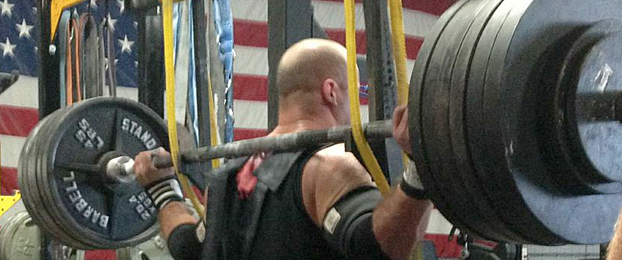
This is part one of a two-part series.
Learning to squat properly may be one of the hardest tasks you have ever undertaken, but it is well worth the effort. When you say the word “squatting,” it registers differently in most everyone’s mind. The uneducated have one interpretation, the football coach has another, the beginner powerlifter has another, and the elite powerlifter has another. And then everyone knows that guy at the gym who has a skewed definition which only requires him to break his knees at about 15 degrees. But I digress…
In the following article, we will talk about learning how to squat. In part two, I’ll speak about how to make the switch from raw to assisted lifting. So let’s learn to squat and I mean properly. After the publication of this article, squatting above parallel will not be tolerated anymore. Sound like a deal?
I’ll start by saying that everyone is built differently, and therefore everyone squats a little differently. You have to step back and take a good honest look at how you’re built. Film yourself from different angles to see how little changes like foot width, bar placement, and toe angle changes your leverage. If you have a short torso or a long torso, a long femur or a short one, there is a stance that will work best for you. But it will take a little work to find the one that fits you best. The key is to find a stance that allows you to keep the bar on your back, over your knees, and over your ankles. As you widen your feet and knees, it may allow you to be more upright, and moving the bar down your back one inch may help even more.
Let’s begin with how to get started. First, you need a good squat bar like a Mastadon bar. This is an eight-foot bar that is used in many top organizations. Some federations only allow a seven-foot bar like the Texas power bar, which can be tough for large lifter, but you have to do what you have to do. You need a power rack or a monolift or one of those cool combo deals like EliteFTS.com sells. You’ll also need a good adjustable squat box, some weight plates, and a good belt (we will learn how to use all of this properly next time). The addition of bands and chains are very helpful, and eventually the addition of specialty bars like the cambered or safety squat bar will be helpful in broadening your training and making you stronger faster. That’s the name of the game, is it not?
Now, let’s talk about learning the proper squat form. (I will use a monolift for reference.) Walk up to the bar and acquire your favorite stance. The bar should be around nipple height. Take your grip and dip, or have someone help you under the bar and secure it in that “spot” on your back. Take a breath into the gut and arch the bar out, making sure your head and chest are up. Allow the bar to become stable, and with your butt moving first, sit back. Continue to hold the breath, keeping the head and chest up and forcing your knees to stay out (not pinching). Sit back further and further until you become fully seated on the box. Relax the hip flexors, drive the head back (keep driving it back until lockout), keep those knees out, and drive the hips through until lockout. Well, how was it? Sucked, didn’t it? It takes time and significant hamstring and hip strength to sit back properly, but you will get it.
One of the purposes of the box squat is to allow you to make sure you hit the depth of choice. You can find parallel by simply sitting back on the box properly and looking at the knee and the hip joint. If you can’t tell, have someone snap a photo from the side at the proper angle. It’s ok to start with the box a few inches above parallel and gradually work it down over the next few workouts because learning the proper form is the battle. The big weights will follow. There are many exercises that will strengthen the body parts needed to squat well. We will address many of these in part two.
Thanks for taking the time to read this article. I hope that you learned something and will return to read part two. In the mean time, learn all you can and follow all the training and tips at www.elitefts.com. We are here to make you strong!








